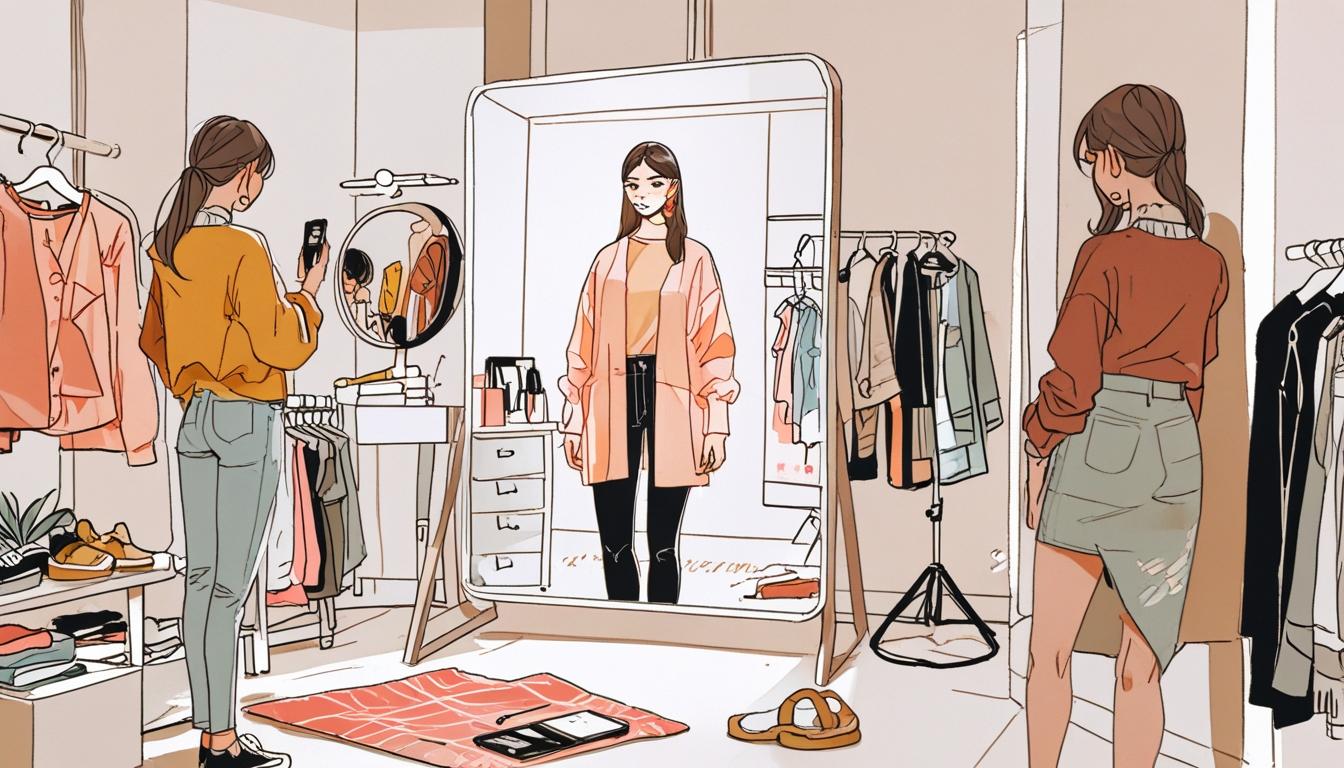In recent developments within the fashion industry, virtual try-on technologies are significantly reshaping how consumers shop and engage with style, blending elements of augmented reality (AR), artificial intelligence (AI), and personalisation. This transformation is seen as a move beyond traditional shopping experiences, with digital fitting rooms and virtual applications becoming more commonplace both online and in the evolving metaverse.
This shift is notably influencing the retail environment towards more sustainable and conscious consumption. By enabling more accurate virtual trials of clothing and beauty products—such as lipstick shades and apparel fittings—there is a reduction in the volume of returns, which in turn helps to lower carbon footprints associated with shipping and overproduction. The adoption of these technologies promotes intentional investing over impulsive buying, offering consumers a more curated and mindful approach to their wardrobes.
While the tactile aspects of shopping—the texture of materials and the spontaneous satisfaction of in-store discoveries—are less accessible through virtual platforms, the benefits include streamlined retail operations and improved inventory management for brands. These efficiencies potentially lead to more sustainable profits for retailers.
Personalisation is at the heart of these technological advances. Through AI and VR, virtual try-ons provide recommendations tailored to individual body types, skin tones, and style preferences. This allows shoppers to gain confidence in their purchases while experiencing a low-pressure, personalised shopping journey that reflects the in-store fitting room experience without common anxieties. As explained in Elle India, these digital tools enable shoppers to understand how a garment integrates into their lifestyle and self-expression, making the process not only seamless but engaging. This bespoke approach yields fewer product returns and higher customer satisfaction.
The integration of virtual try-ons within the metaverse is also opening new avenues for fashion exploration. Consumers can create avatars and experiment with styles unbound by physical-world limitations, trying on designer outfits, accessories, and makeup in immersive environments. These digital personas serve as platforms to test bold fashion choices and support conscious consumption by making informed buying decisions.
Moreover, inclusivity is a significant advantage of virtual fashion innovations. Virtual fashion experiences transcend traditional barriers of body size, gender, and geographic location, granting users equal access to style experimentation. Features like size-inclusive filters and adaptive clothing previews at the avatar level democratise fashion engagement, addressing gaps often seen in conventional industries.
As fashion continues to intersect with digital technology, the future of the industry appears both immersive and inclusive, offering consumers freedom to explore and express their identities in new ways. For brands, the adoption of virtual try-on technology enhances customer engagement while simplifying logistics challenges.
Ultimately, whether consumers choose to experiment with their real-life selves or digital avatars, virtual try-on technology is emerging as a defining feature of modern fashion retail. It facilitates a novel fusion of personalisation, sustainability, and style experimentation that is increasingly becoming part of everyday shopping experiences.
Source: Noah Wire Services
